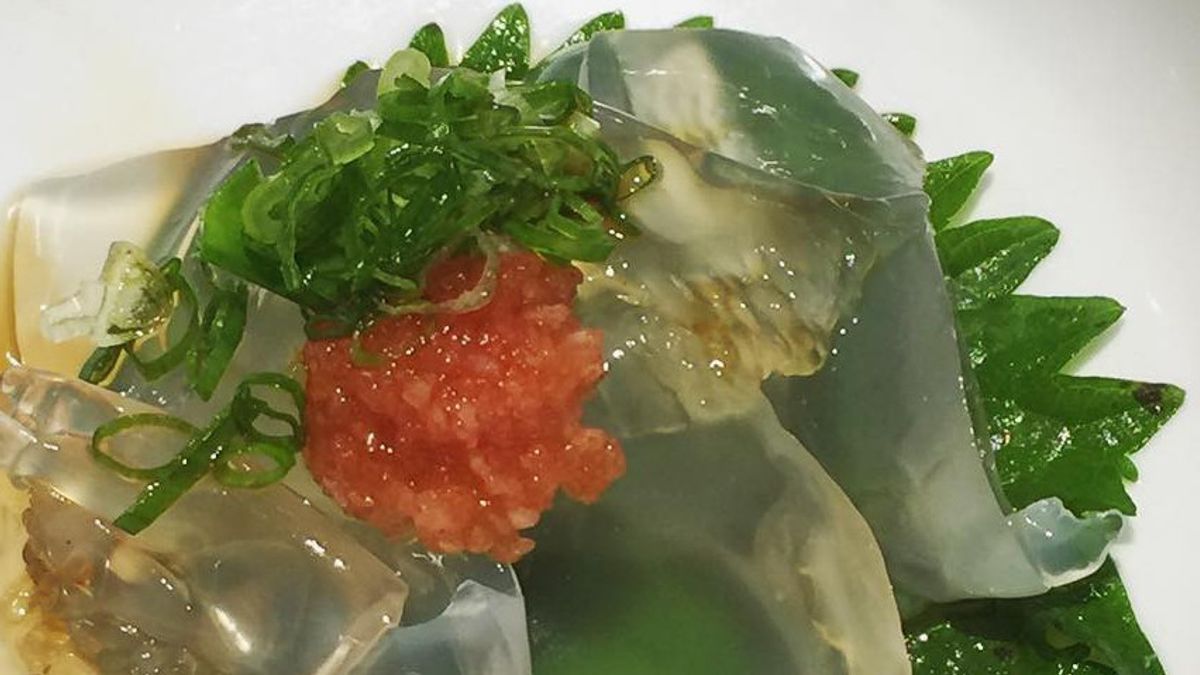
JAKARTA - A recent study says we have to eat more jellyfish if we want to save the planet Earth. The existence of fish is increasingly being threatened, while jellyfish are not. It is more "renewable". But, how is it possible to switch if we do not know the taste and content of jellyfish?
University of Queensland scientists conducted a study whose results suggest marine conservation must be promoted. Humans can still eat seafood, but they must switch from fish. Fishing has become a continuing threat, including for 96 percent of species that are threatened with extinction.
The research found 91 endangered fish species have been legally caught on a global industrial scale. About 15 percent of these endangered species are traded internationally to meet the needs of various countries, especially the European community. The fish on the list include haddock, mackerel, Atlantic horse and big eye tuna.
"Eating something that is endangered should be illegal, especially species that are critically endangered," said Dr Carissa Klein, one of the researchers, quoted by Euronews, Tuesday, October 27.
"We would never consider eating mountain gorillas or elephants, both of which are endangered," added PhD candidate Leslie Roberson, who co-authored the paper.
If we are to continue eating seafood, the industry must shift to more sustainable sources. And it can't be done halfway. It must be comprehensive and permanent.

Jellyfish is not a new food. It has been a staple food in several types of cuisine for more than 1,700 years. However, the move that the University of Queensland researchers are referring to is more than that. Jellyfish should replace fish as the main source of protein worldwide.
This is very possible. In content, jellyfish have an adequate supply of protein with almost zero calories. One serving weighs 75 grams of jellyfish has only 36 calories, about the same amount as iceberg lettuce (larsen). Meanwhile, the protein content is almost four grams.
Jellyfish has almost no taste. Therefore, processed jellyfish dishes require a mixture of sauces and spices. The added value, with that neutrality, jellyfish can almost be processed into any type of food.
In the mouth, jellyfish taste chewy, squishy and crunchy, says marine biologist Lisa-ann Gershwin describing the taste of jellyfish. "In the mouth it feels like a cross between a cucumber and a rubber band," he added.
Roberson added, it takes a habit to switch from fish. And it must be done. He also said there would be no problem with jellyfish having no taste. So much seafood that is commonly enjoyed but has no authentic taste. Often it is the tradition that makes a food enjoyable.
"Much of our appetite for seafood is driven largely by culture and tradition," he said. "A real example is shark fin soup. Shark fin is basically tasteless. And it's all about the spices and sauces - as well as the status - that make it a delicacy in China," Roberson.
Cannonball jellyfish and blue fat jellyfish are two of the many edible jellyfish species. Blue fat jellyfish are abundant in Australian waters, often appearing in herds along Australia's east coast.
In addition, there are cannonball jellyfish which have become one of the most valuable export commodities in the State of Georgia, United States (US). Most of the exports from Georgia end up in Japan, China and Thailand.
An unconscious threatPerhaps we hardly realize that one day, the sea fish we eat will be the last fish menu on our dinner table. So, fishing must stop.
The greatest pressure is on EU countries. The European Union must end overfishing to protect our oceans.
Why jellyfish? Researchers have compared the jellyfish cycle to an apple tree. "With fish, you fish them and they all go extinct. But with jellyfish it's like picking apples from a tree," said Gershwin.
Jellyfish are described as having a renewable reproductive cycle. "They have a life cycle. The more you throw away, the more they produce, like apples on a tree," adds Gershwin.
The English, Chinese, Japanese, Arabic, and French versions are automatically generated by the AI. So there may still be inaccuracies in translating, please always see Indonesian as our main language. (system supported by DigitalSiber.id)










